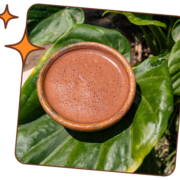UPCOMING EVENTS
Women’s Herbal Wellness Class Series
with Alicia Garza
First two Fridays of the month

January 2nd & 9th
@ 4:00 pm
*** Stick around for Terrie’s Sound Bath afterwards***
*************
Grounded Sound Baths
Fridays January 2nd & 9th
6:00 pm
(Come after Alicia’s Wellness Class)

Connect with Mother Earth as you immerse yourself in the soothing sound of crystal and Tibetan singing bowls and other meditative instruments for a deeply relaxing & healing inward journey. Grounding mats provided.
*************
Return of the Light:
Plant Allies for Stress, Depression, and Fatigue
with Kat Maier

Saturday January 31st, 2026, 10am – 5pm
Heart-Opening Cacao Ceremony

Sunday Morning Tea Ceremonies

with Silvy Franco
Join Silvy for a meditative ceremony to commune with Camelia sinensis. Come for quiet reflection as you sip on several cups of tea following Japanese tradition. Ceremony begins at 9:30 am and goes for an hour. Pre-registration is required.
Suggested Donation: $25




Oats
/in Herb of the Month /by Ashley DavisOats, oat straw or milky stage oat tops, are one of the best restorative tonics for the nervous system and bones. It is highly nourishing, tastes delicious, and has no contraindications. I can’t think of a single person who doesn’t need both deep nourishment and nervous system support right now, so let me introduce you to the soothing, sensational, milky white medicine of Oats…
COMMON NAME: Common oats, Milky oats, Grouts
FAMILY: Poaceae
PARTS USED: Straw (leaf & stalk; best for teas), milky-stage buds (fresh-plant tincture), mature seed (the part we eat)
BOTANICAL DESCRIPTION: An annual grass grain that can grow 14-40” tall that has unbranching, hollow, round stems that can be tufted or solitary. Has alternate, 2-ranked, linear and parallel-veined leaves growing upwards from the upper part of the stem and tapering to a point. It has wedge-shaped spikelets that grow on the plant all year round, containing small flowers or seeds depending on the time of year. Its flowers are androgynous, minute, and bisexual, with 3 stamens and 2 stigmas. The grain is the fruit and starts green, emits a milky ‘sap’ early in maturation (lasts only about a week – for the strongest, most medicinally active preparation, the seeds should be used fresh when they are in the milky stage), and if allowed to mature, hardens the milky sap into grain and eventually dries to yellowish tan when grains are harvested.
GROWING/HARVESTING/PROCESSING: Oat seeds are planted in spring and/or late summer, after vegetable harvest, or under mature crops before mid-September. In colder zones, seeds can be planted in late summer or early fall for a winterkilled cover. They grow in many soil types, including loam and heavy soils, and are more tolerant of wet soil than barley. Broadcast seeds by hand and lightly rake them into soil at a depth of ½-1” in a weed-free planting area. Oats are typically rain-fed but may need to be irrigated if insufficient rain falls during the growing season (typically 3-4”). Timely sowing can help increase fertility, regulate water and air, and promote root development.
Milky oats should be harvested when the milky sap can be extracted by squeezing the seed. This occurs at the very beginning of seed maturation, just before grain development and only lasts about a week so crop should be closely monitored to ensure successful harvest. Oat straw can be harvested after milky stage oats are harvested but before the plant fully develops grain and turns yellowish tan. Fully mature oats may be harvested when the field turns uniformly yellow, which is usually about 12 weeks after planting. To harvest, cut grass just above the soil with a sharp knife or scissors. To save dried seeds, cut or pull the seed heads from the plant and let them fully dry for a couple of days before storing in a dry container.
ENERGETICS AND TASTE: Sweet, bland, neutral-cool, moist
ACTIONS AND PROPERTIES: Nutritive tonic, nervous system tonic (trophorestorative), demulcent, vulnerary, antidepressant, anxiolytic, emollient, one of the best herbal supports for nervous system under stress
INDICATIONS: Oats are a gentle tonic herb that support the nervous system without stimulating or sedating. Can help reduce fatigue and support nerve functioning over time. Great for anyone who is overworked or relies on caffeine to get through the day, for people who are frazzled, emotionally labile, and those who “burn the candle at both ends.” A classic milky oats symptom picture is someone who is anxious, exhausted, emotionally volatile, and looking a little dried out (dry skin, dry hair & nails)
Oats may be helpful for exhaustion (physical and mental), chronic stress, heat and inflammation, dryness and itchiness (think itchy, dry, scaly skin eruptions), depression and anxiety, osteoporosis, undernourishment, sympathetic excess, adrenal burnout, weakness, convalescence from prolonged illness, insomnia, dry, brittle nails, skin, and hair, and even low libido (especially if this is due to exhaustion, dryness, depletion and stress). Externally soothing for inflamed skin (oatmeal bath). High in silicon so it is excellent for tendons, skin, mucosa, and nerves. The silica in oat straw is excellent for connective tissue, tendons, skin, mucosa, and nerves.
As a nervous system trophorestorative (a revitalizing tonic to the nervous system), oats are helpful for a wide range of nerve disorders including neuralgia, herpes infections, depression, insomnia, and neurasthenia, but it is especially indicated for nerves that are frayed from stress or nervous exhaustion due to overwork or chronic stress. Oats can help us feel grounded and calm amidst the continuous daily stress that we face from work, family, poor diet, alcohol, drugs, environmental toxins, etc. They are food for the nervous system- calming, but not sedating. Oats repairs damage to the myelin sheath, which covers the nerve fibers.
Susan weed describes Avena as “upping the amperage of the nervous system so you can carry more voltage.” By strengthening the nervous system, oats improve sensitivity to touch, which is why they have a reputation as an aphrodisiac. For sexual neurasthenia; for people who work hard, are tired at night, have low libido, and who tire easily during sex.
Avena is both a trophorestorative and tonic. Tonic herbs are generally indicated in convalescence, debilitating conditions with or without anorexia and chronic fatigue syndrome. Taken over time, Avena will increase stamina and strength. Over time, Avena lifts the spirits and is a nourishing tonic that is often combined with Skullcap. Avena is theorized to stimulate the limbic system and motor ganglia thereby increasing energy level and one’s sense of wellbeing.
Oats can also help with ADHD and OCD behaviors and can help to reduce withdrawal symptoms from various drugs/addictive substances including nicotine, caffeine and anxiety medications (combines well with skullcap for this as well). They help to keep the nervous system on a steady keel. Fresh plant tincture is best for this. Oats are also a cardiac tonic and nourish the heart and blood vessels. The mature seed has been shown to reduce cholesterol levels.
CONTRAINDICATIONS: Normally extremely safe for people of any age. Food Grade Herb- no toxicity. Suitable for pregnancy and nursing. Oat straw and milky oat tops are naturally gluten-free. The only concern regarding gluten is for oat grain that has been processed in a facility that also processes wheat.
PREPARATIONS AND DOSAGE: Soluble in water, alcohol; minerals soluble in vinegar; alkaloids in fresh buds are best extracted in alcohol. Long-term therapy is the norm.
COMBINATIONS:
HOMEOPATHY USE: Has a selective action on the brain and nervous system, favorably influencing their nutritive function. Nervous exhaustion, sexual debility and the morphine habit call for this remedy in rather material dosage. Best tonic for debility after exhausting diseases. Nervous tremors in the aged; chorea, paralysis agitans, epilepsy. Post-diphtheritic paralysis. Rheumatism of heart. Colds. Acute coryza (20 drop doses in hot water, hourly for a few doses). Alcoholism. Sleeplessness, especially in alcoholics. Bad effects of morphine habit. Nervous states in many female problems.
FLOWER ESSENCE USE: Oat flower essence “is the remedy for people who feel they want to do something worthwhile with their lives but don’t know which direction to go. They tend to drift from one thing to another without finding a true path. They become frustrated and downcast as a result.” (The Bach Center)
ETHNOBOTANY/FOLKLORE/HISTORY: Oats are the archetype of fertility, the symbol of Demeter. Ancient legend says that Gaia herself was weaned on the milk of this flowering plant. We’ve all heard the phrase “to sow your wild oats”, which means to spread your seed. It’s a symbol of virility.
REFERENCES:
*** This article is for educational purposes only. This information is not meant to diagnose, treat or cure any disease. ***